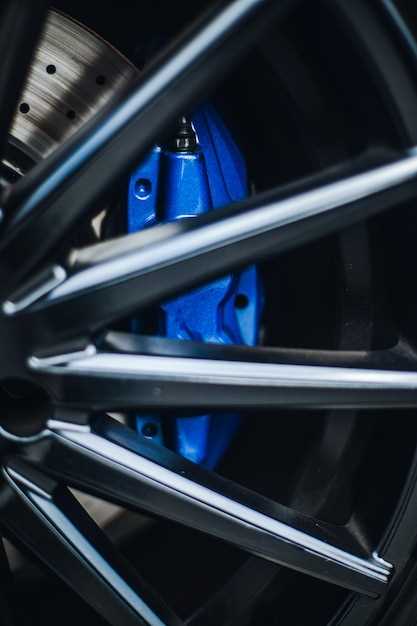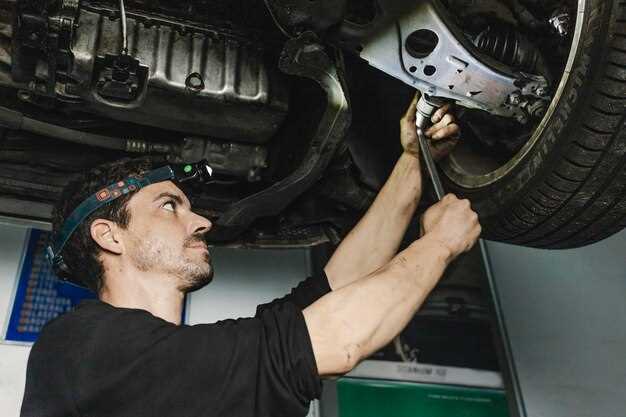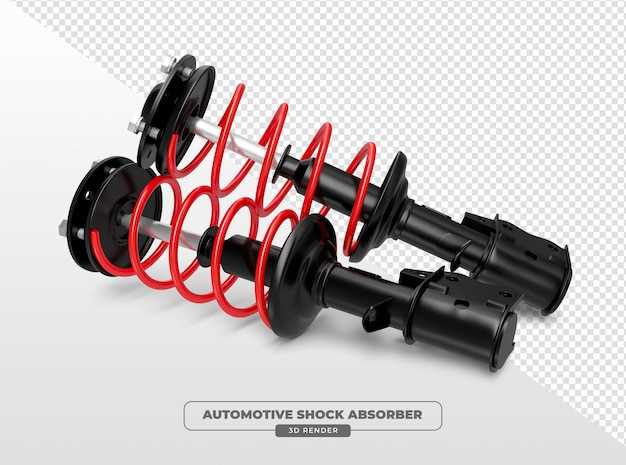
Maintaining your vehicle’s air suspension system is crucial for ensuring a smooth and comfortable ride. Unlike conventional suspension systems, air suspension utilizes air-filled bags to provide a unique balance between comfort and responsiveness. However, neglecting this vital system can lead to decreased performance and even potential safety hazards. Thus, understanding the steps required for optimal maintenance is essential for every vehicle owner.
One of the primary factors in air suspension maintenance is the quality of the air used in the system. Contaminated or low-quality air can cause rapid deterioration of air components, leading to leaks and inefficiencies. Regularly checking for and addressing any air quality issues will help prolong the lifespan of your suspension system and enhance your overall driving experience.
In addition to air quality, routine inspections and maintenance are key to preserving the performance of your air suspension system. Regularly check for leaks, inspect the air bags for wear and tear, and ensure that all connections are secure. By following these maintenance tips, you can ensure that your suspension continues to deliver the optimal ride quality that you expect from your vehicle.
Inspecting Air Springs for Wear and Damage
Regular inspections of air springs are crucial for maintaining optimal suspension performance and ensuring a smooth ride. Neglecting this aspect can lead to premature wear and potentially severe damage. Here are key steps to effectively inspect air springs:
- Visual Inspection:
- Examine the outer surface for any visible cracks, punctures, or abrasions.
- Check for signs of discoloration or excessive wear, which may indicate material fatigue.
- Look for any signs of air leakage, such as a hissing sound or noticeable deflation over time.
- Physical Inspection:
- Pressurize the air springs to their recommended PSI and observe for consistent pressure.
- Gently manipulate the air springs by hand to check for unusual stiffness or softness.
- Inspect the mounting hardware for loose or corroded components, which could affect system integrity.
- Check Alignment:
- Ensure that air springs are properly aligned with the suspension components to avoid uneven wear.
- Monitor the vehicle’s ride height and level during operation; any discrepancies may indicate air spring issues.
- Listen for Noises:
- Pay attention to any unusual sounds when the vehicle is in motion, as these may be signs of failing air springs.
- Investigate any clunking or knocking noises that could indicate loose components related to the air suspension system.
By regularly inspecting air springs for wear and damage, you can prevent larger issues and maintain the quality of your vehicle’s suspension and ride experience.
Checking Air Lines for Leaks and Blockages

Regular inspection of the air lines in your suspension system is essential for maintaining optimal performance and ride quality. Over time, air lines can develop leaks or become blocked, which can significantly impact the functionality of your air suspension.
Identifying Leaks: To detect leaks, start by visually inspecting the air lines for any signs of wear, cracks, or damage. A common method to check for leaks involves using a soap solution; apply it to the connections and lines, watching for any bubbles that form, indicating escaping air. If a leak is found, immediate repairs or replacements are necessary to restore proper air pressure and ensure the suspension operates effectively.
Checking for Blockages: Blockages can also hinder the performance of your suspension system. To check for obstructions, disconnect the air lines and use compressed air to blow through them. This process can help clear any debris or buildup that may be restricting airflow. Additionally, ensure that the fittings are clean and free of contaminants to prevent future blockages.
Regular Maintenance: Incorporating routine checks of your air lines into your maintenance schedule not only prevents potential issues but also enhances overall ride quality. Regularly inspecting and maintaining the integrity of the air lines can prolong the life of your air suspension system, ensuring a smoother and more comfortable driving experience.
Maintaining Air Compressors for Consistent Pressure
Proper maintenance of air compressors is crucial for achieving optimal performance in air suspension systems. Consistent pressure is vital for ensuring the quality of the suspension system, as it directly affects ride comfort and vehicle handling.
To maintain your air compressor effectively, start by regularly checking and replacing the air filter. A clean filter prevents contaminants from entering the system, which can lead to inefficiencies and damage over time. It is advisable to inspect and change the filter based on the manufacturer’s recommendations or more frequently if operating in dusty conditions.
Next, regularly monitor the compressor’s oil level and quality. If your air compressor is oil-lubricated, using the correct type of oil is essential for smooth operation. Replace the oil according to the maintenance schedule to prevent wear and tear on internal components.
Regularly examine the electrical connections and wiring to ensure they are secure. Loose or damaged connections can lead to inconsistent pressure and compromise the overall function of the suspension system. Clean any corroded connections to maintain strong electrical flow.
Furthermore, it’s important to keep the compressor free of moisture. Water buildup can create rust and adversely affect quality. Drain the moisture from the tank frequently, especially after use, to maintain a dry operating environment.
Lastly, schedule periodic professional inspections for your air compressor. Technicians can identify potential issues before they escalate, ensuring that your air suspension system operates with consistent pressure and unmatched quality.
Adjusting Ride Height for Comfort and Stability
Adjusting the ride height of your air suspension system is crucial for achieving optimal comfort and stability while driving. A well-calibrated air suspension directly impacts vehicle handling, responsiveness, and overall ride quality. By fine-tuning the height, you can enhance your driving experience on various terrains.
The ride height can be adjusted to accommodate different driving conditions, whether you’re navigating city streets, tackling off-road trails, or carrying heavy loads. Maintaining the correct air pressure in the suspension system not only optimizes performance but also extends the lifespan of the components.
Here are some essential tips for adjusting ride height:
| Tip | Description |
|---|---|
| Determine Preferred Height | Decide the height that provides the best comfort and stability based on your driving style and preferred settings. |
| Use Quality Components | Invest in high-quality air suspension components to ensure durability and consistent performance across various settings. |
| Regular Monitoring | Frequent checks of the ride height and air pressure will help maintain optimal performance and prevent unexpected issues. |
| Adjust Gradually | Make small adjustments to the ride height to find the sweet spot for your comfort and vehicle stability. |
| Take Test Rides | Conduct test drives after adjustments to assess any changes in ride quality and handling, allowing for further fine-tuning. |
Fine-tuning the ride height with a focus on air suspension longevity will significantly improve the overall driving experience. Adopting these strategies ensures that your vehicle maintains a balanced and comfortable ride, regardless of the conditions.
Regular Software Updates for Air Suspension Systems

Maintaining optimal performance of your air suspension system goes beyond physical inspections and part replacements. Regular software updates play a crucial role in ensuring that your ride quality remains at its best. Air suspension systems operate through electronic controllers that manage various functions, including air pressure adjustments, ride height settings, and overall system diagnostics.
Importance of Updates
Manufacturers frequently release software updates to enhance functionality and address any issues that may arise over time. These updates can improve system responsiveness, adjust for updated environmental conditions, and bring new features that optimize the ride. Using outdated software might result in subpar performance, leading to an uncomfortable ride and potential strain on the components.
Benefits of Regular Updates
Regular software updates ensure that your air suspension system adapts to changes in driving conditions or payload, providing a smoother and more controlled ride. Enhanced algorithms can improve feedback and responsiveness, allowing the system to react faster to road conditions and driver inputs. Additionally, updates may fix known bugs that could compromise the performance of the suspension system.
How to Update
To keep your air suspension system updated, consult your owner’s manual for specific instructions on checking and applying software updates. Many manufacturers provide diagnostic tools or mobile applications that facilitate easy updates. It may also be advisable to visit a certified technician who specializes in air suspension systems for a professional assessment and software update.
Conclusion
Investing time in regular software updates is essential for maintaining the efficiency and effectiveness of your air suspension system. By staying current with these updates, drivers can enjoy a superior ride experience that fully utilizes the potential of their air suspension technology.
Choosing the Right Air Suspension Products for Replacement
When it comes to maintaining a smooth and comfortable ride, selecting the appropriate air suspension products for replacement is crucial. The right components can significantly enhance your vehicle’s suspension performance and overall driving experience.
First, always consider the specific make and model of your vehicle. Different vehicles may require unique air suspension parts designed to fit their suspension system perfectly. Referencing the manufacturer’s specifications can help you identify compatible products that will maintain optimal functionality.
Next, focus on the quality of the air suspension products. Investing in high-quality components from reputable brands ensures longevity and reliability. Look for products made from durable materials that can withstand varying conditions and loads during your ride.
Moreover, take into account the type of air suspension system your vehicle uses. Systems often vary between all-terrain and standard applications. Choosing products that align with your vehicle’s specific air suspension type is essential for ensuring compatibility and performance.
Additionally, consider seeking advice from professionals or fellow enthusiasts who have experience with air suspension replacements. Their insights can guide you toward optimal choices and help you avoid common pitfalls associated with inferior products.
Lastly, don’t forget to compare prices and warranty options. A product that is slightly more expensive but comes with a robust warranty may ultimately offer better value than cheaper alternatives without any guarantees. This approach not only ensures your suspension performs well but also provides peace of mind during your ride.
